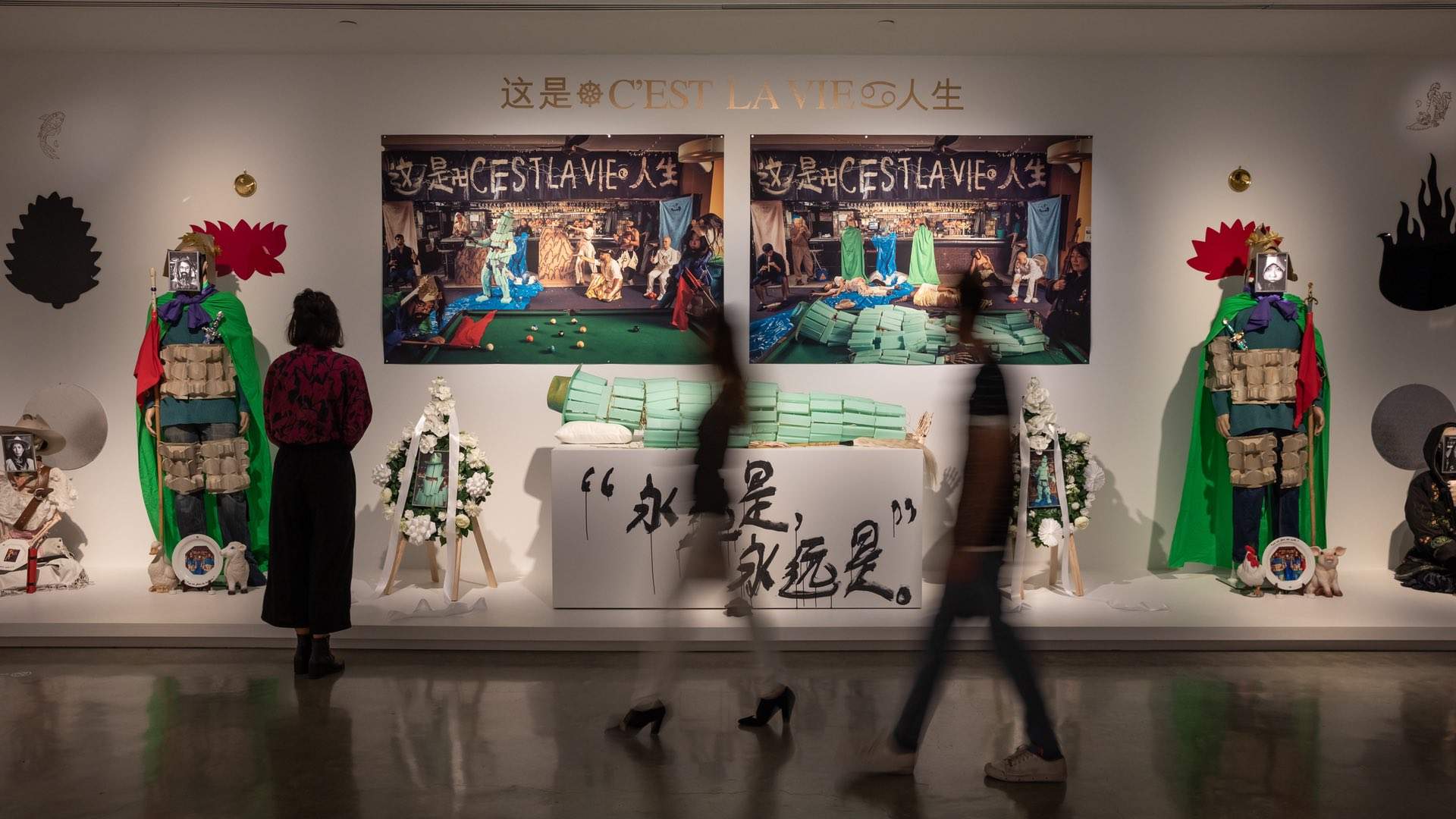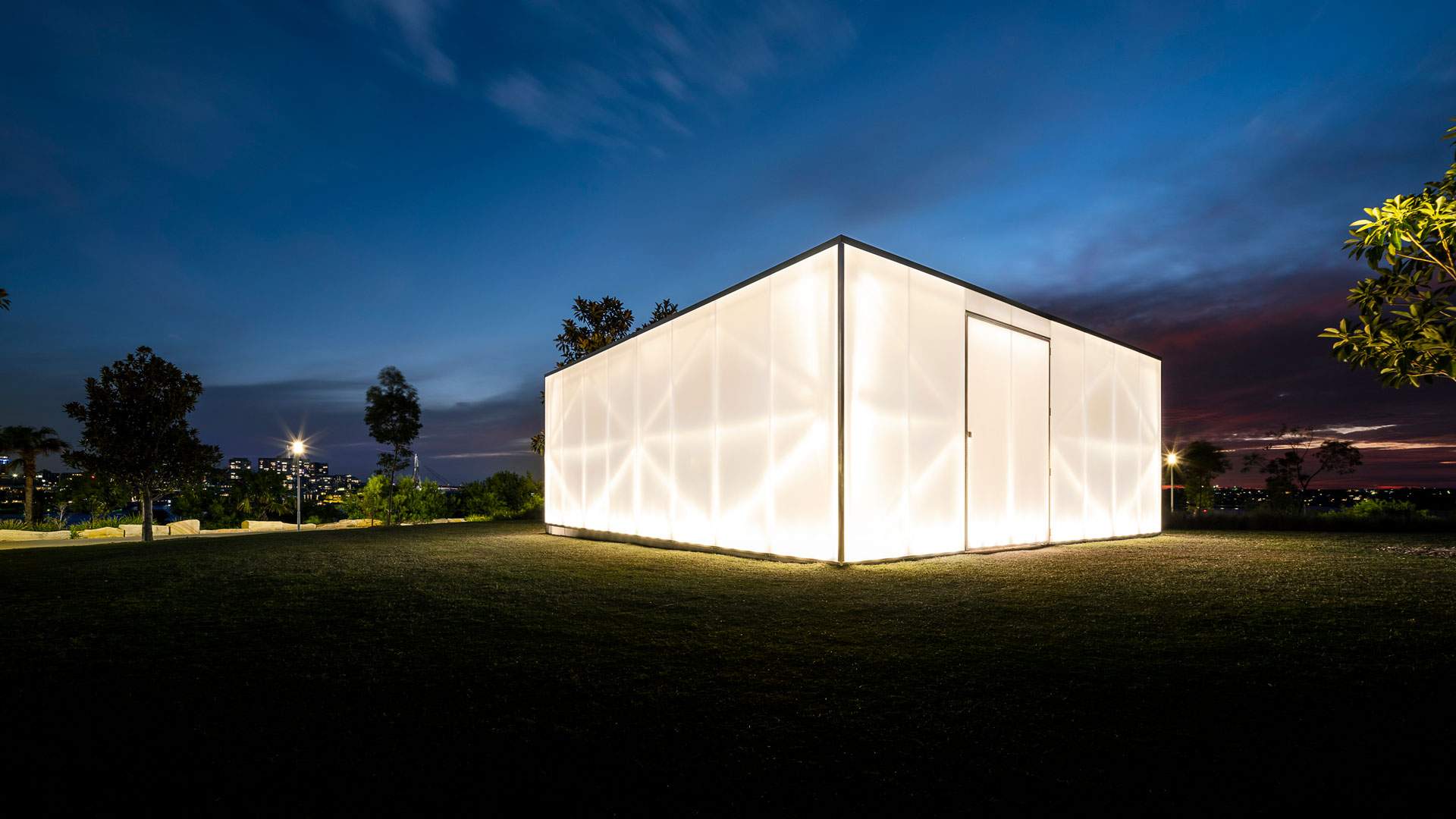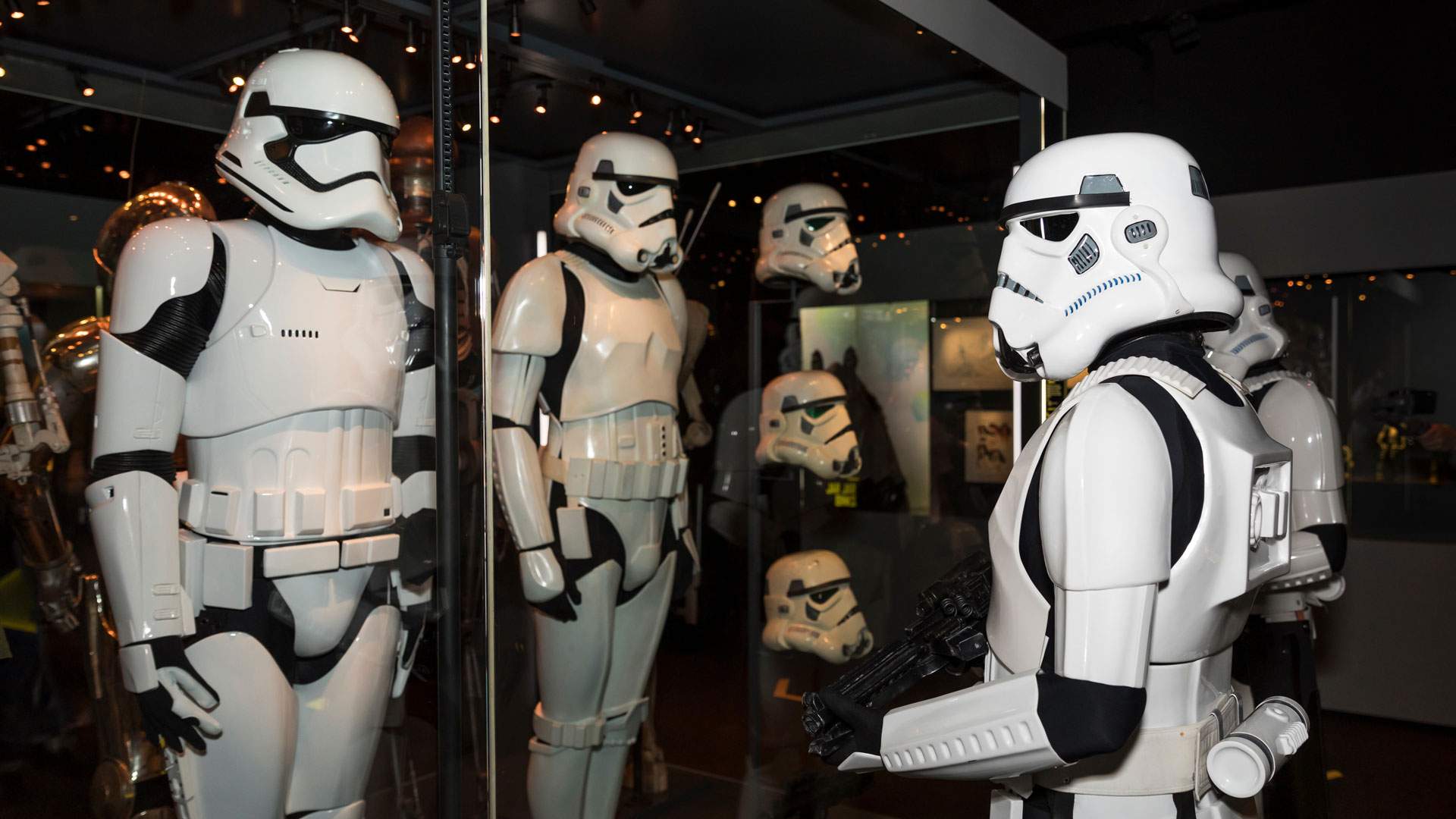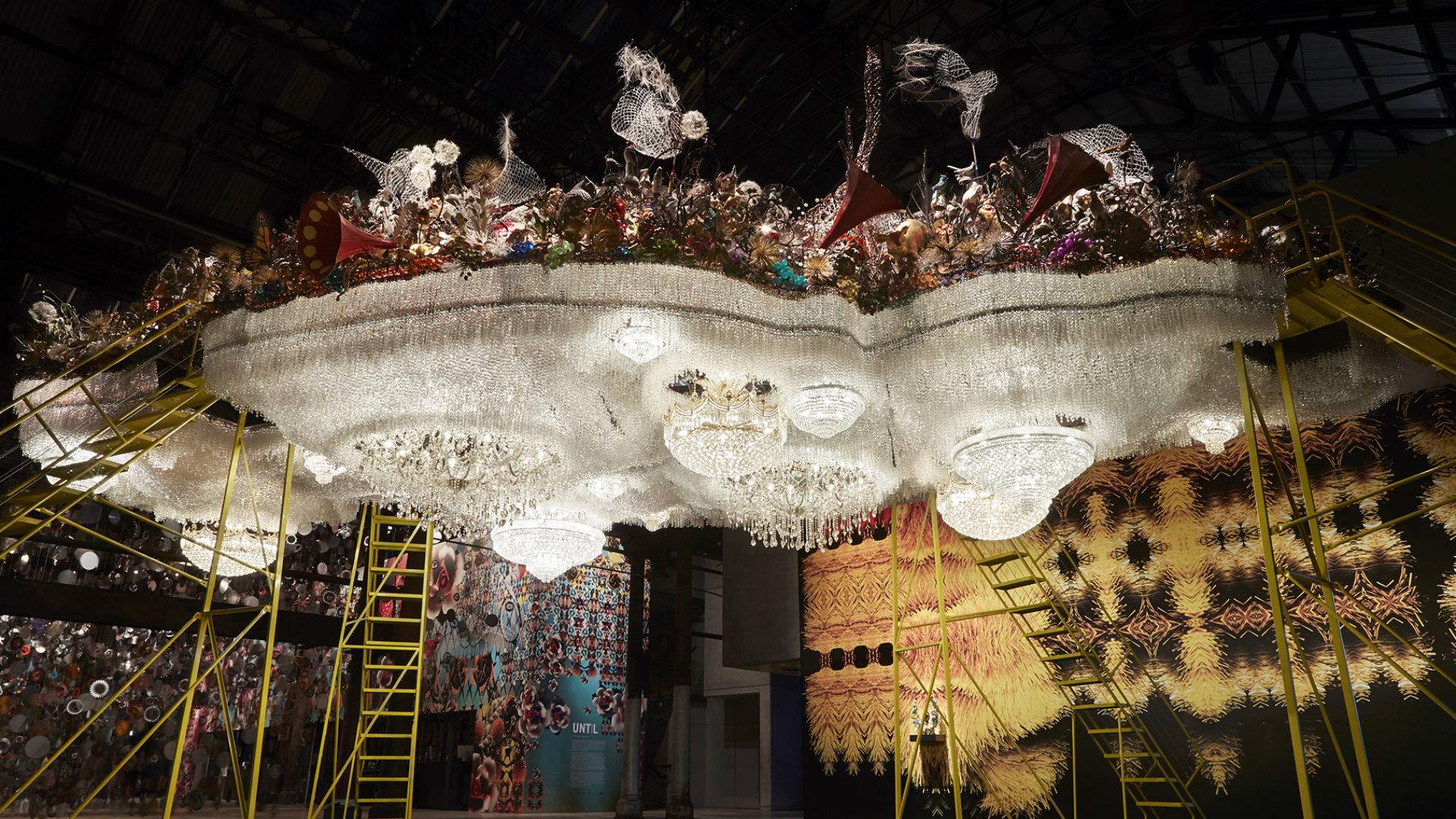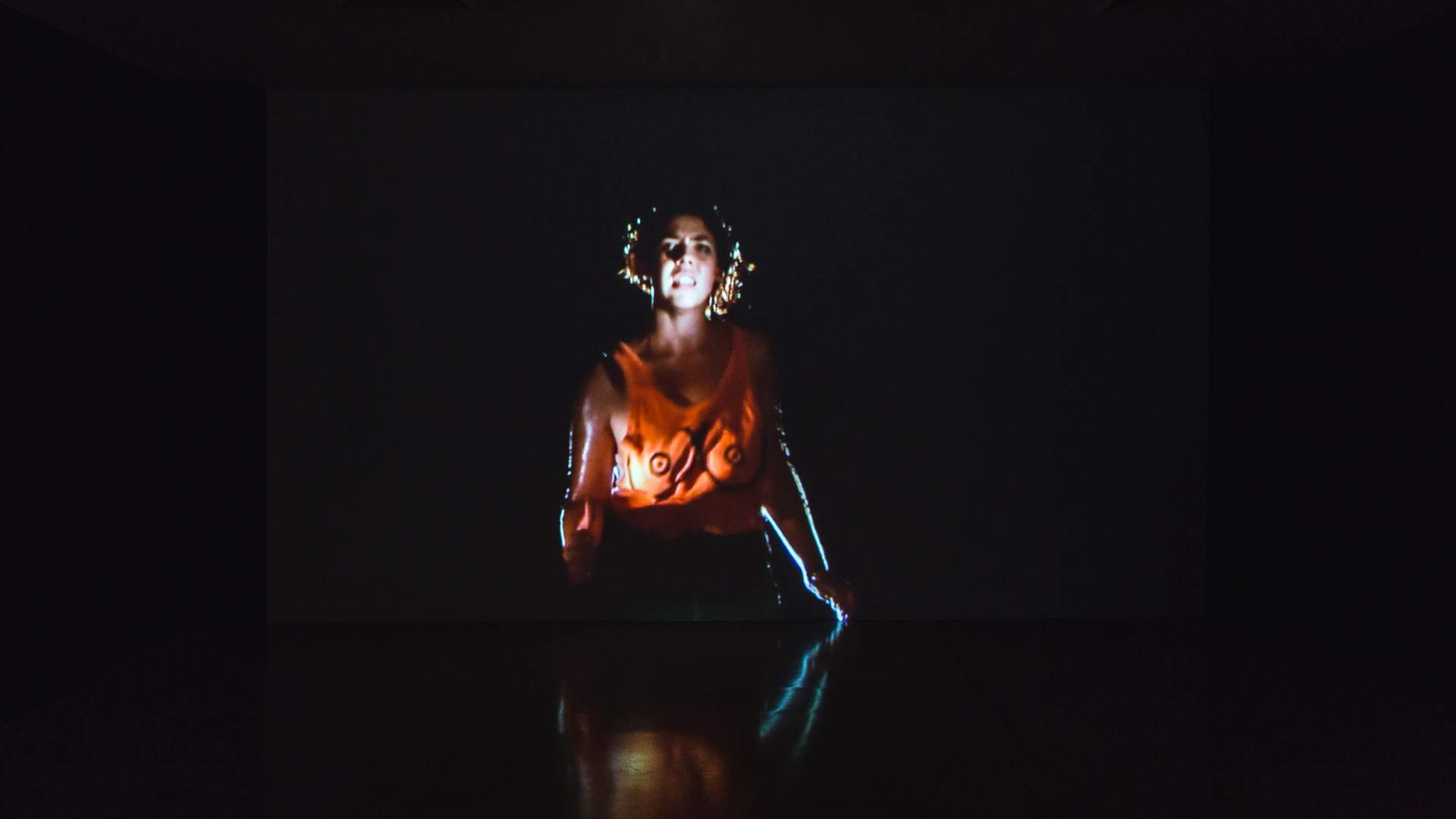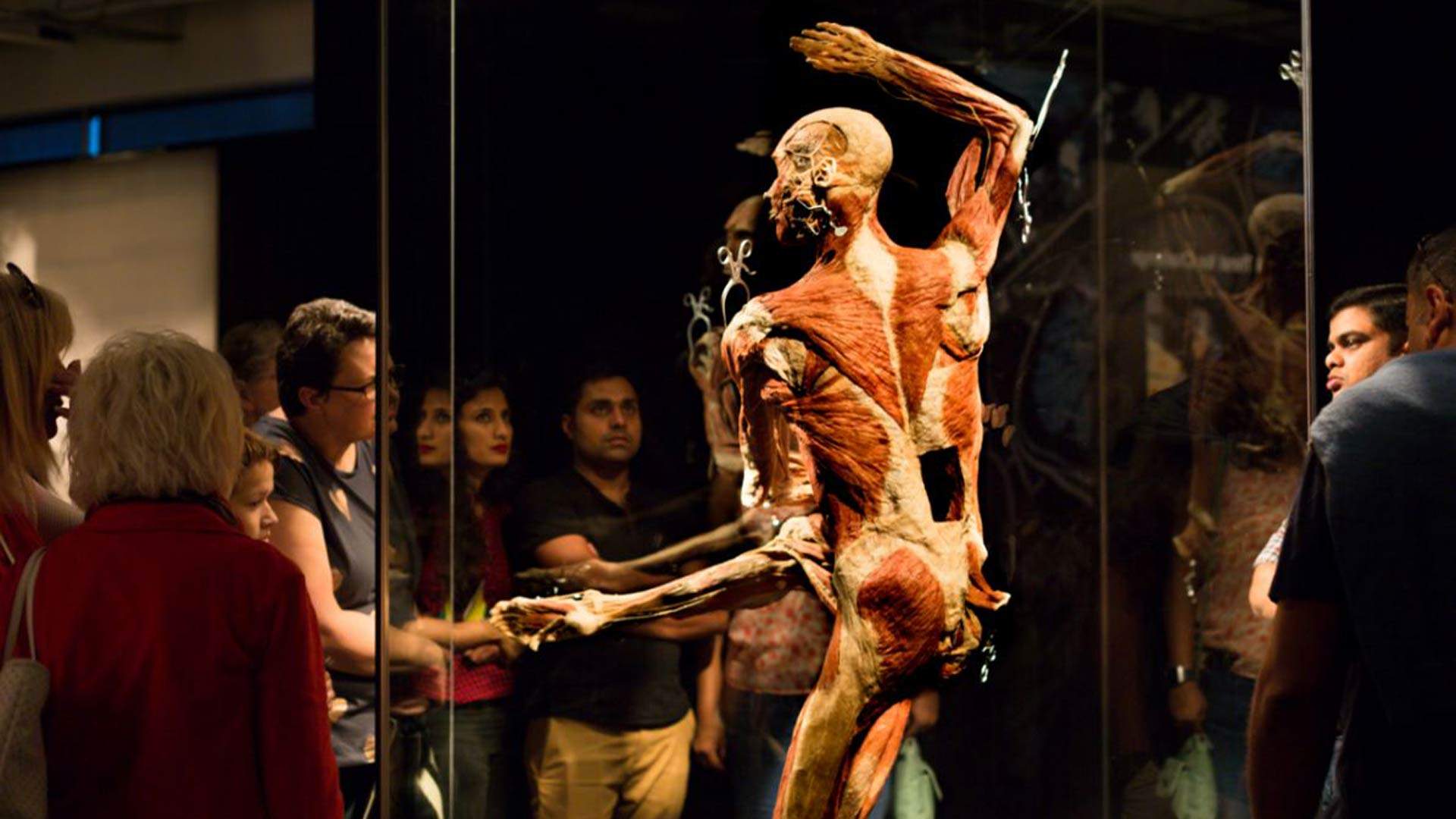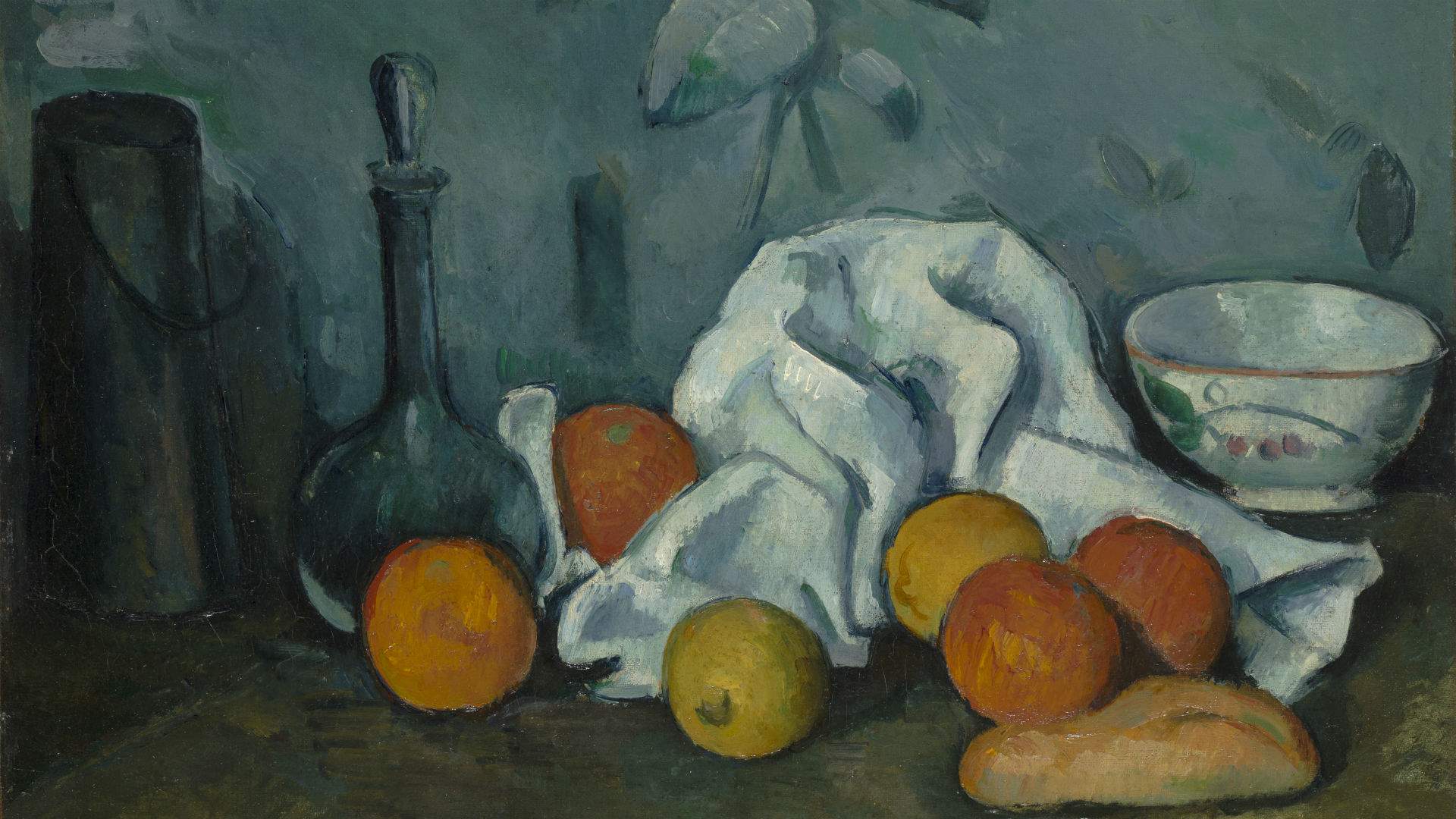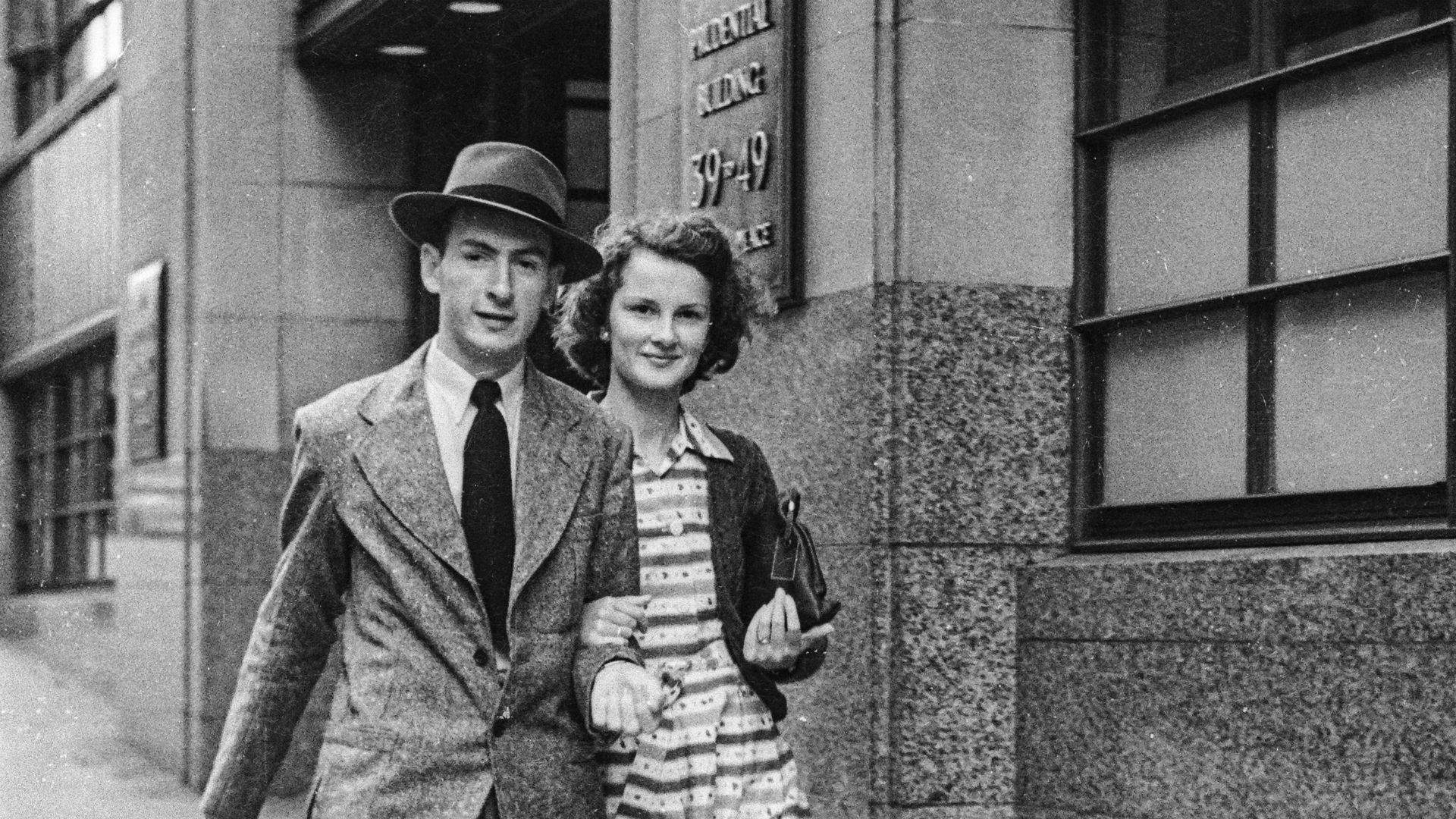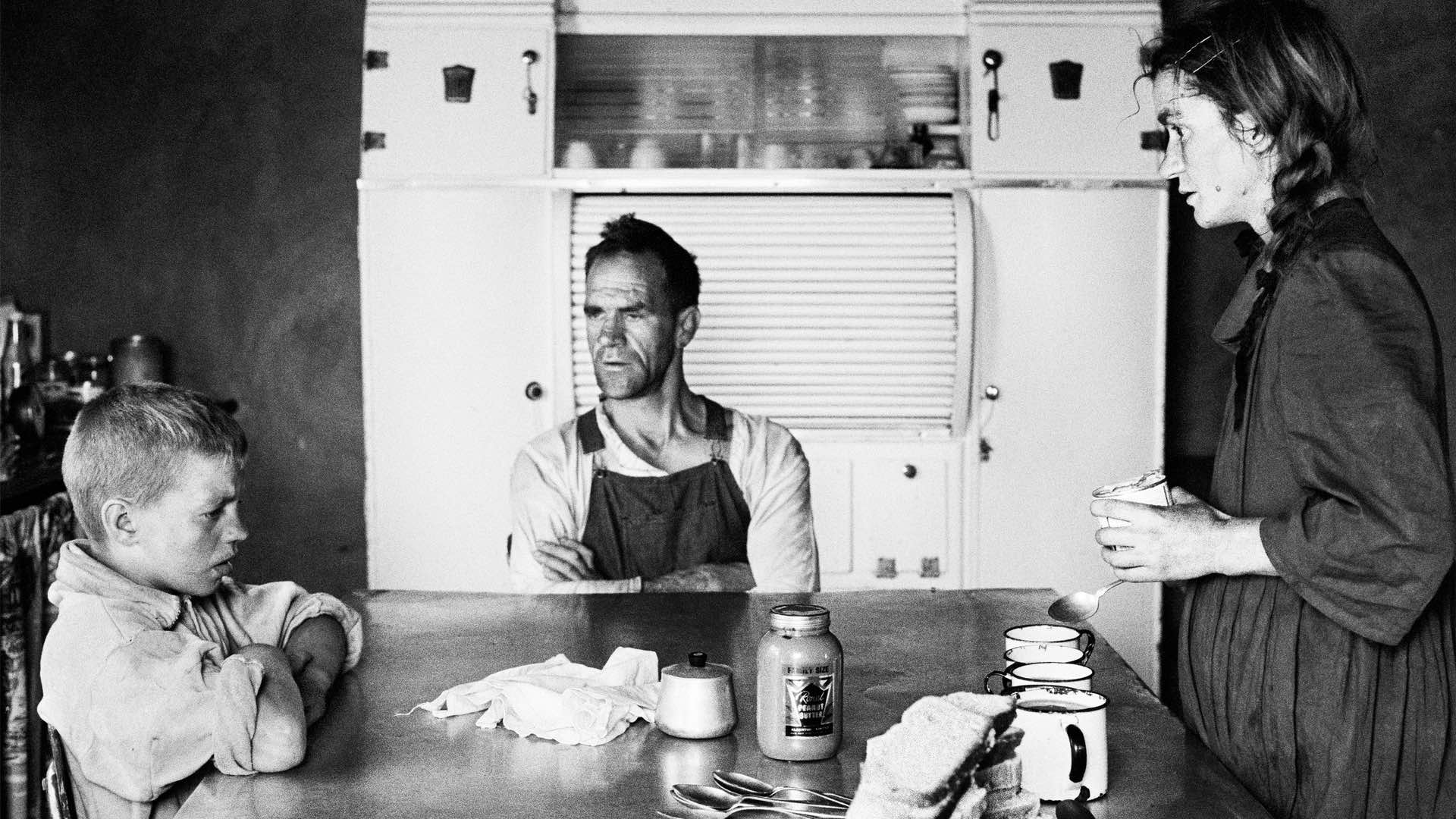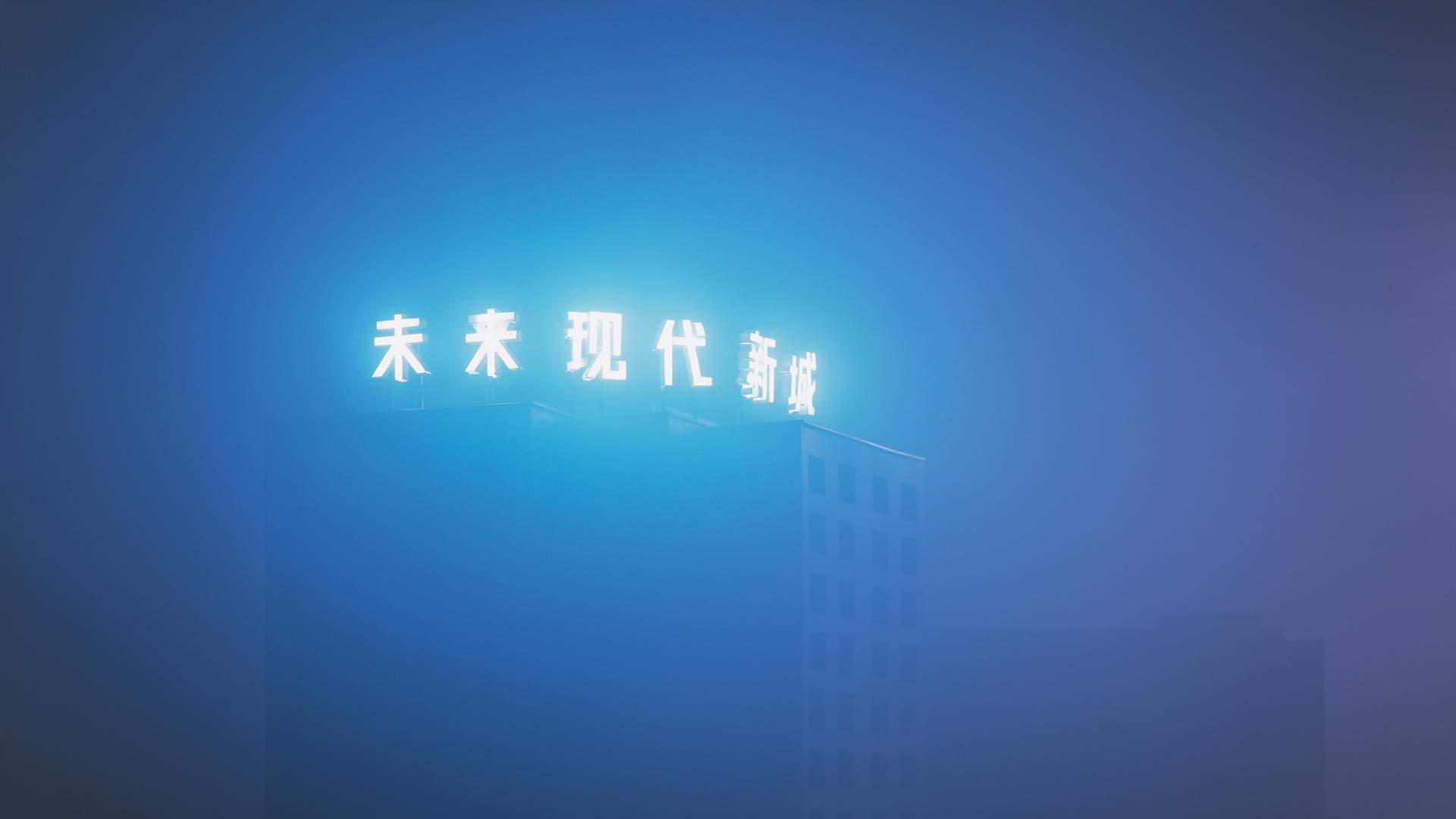Ten Sydney Art Exhibitions to See Before Summer Ends
Take an air-conditioned adventure to Sydney's galleries to explore First Nations stories, Star Wars paraphenalia and art from Australia's most exciting up-and-comers.
Ten Sydney Art Exhibitions to See Before Summer Ends
Take an air-conditioned adventure to Sydney's galleries to explore First Nations stories, Star Wars paraphenalia and art from Australia's most exciting up-and-comers.
Summer always brings hot days to Sydney — and it brings more than a few must-see exhibitions to town, too. The MCA and Art Gallery of NSW have rolled out their blockbusters (David Goldblatt and art from the Hermitage, respectively), and, with Sydney Festival, a huge Star Wars showcase at the Powerhouse and a slew of great shows at smaller galleries, you really have a lot to see before the season is out. Hop to it.
-
10
 Step inside Blak Box, a sound pavilion currently stationed in Blacktown, and you’ll be carried into a world of First Peoples’ stories. Spoken word, music and field recordings combine to create a stream of consciousness that expresses experiences of the land — from the past, the present and the future. The installation is the creation of Urban Theatre Projects, who commissioned architect Kevin O’Brien to design the immersive pavilion. It first popped up in Barangaroo last year, and has made a return for Sydney Festival.Lighting is kept to a minimum, encouraging “deep listening”, a concept that invites you to pay attention, not only to the stories, but also to the silences and spaces between them. Radio National presenter Daniel Browning curated the audio. His selections include 15 commissioned sound pieces, oral histories of Barangaroo before 1788, informal interviews and spoken word performances. The installation’s latest incarnation includes dialogue from Elders Uncle Wes Marne and Aunty Edna Watson, and music from Emma Donovan and violinist Eric Avery. It’s been described as a “21st century campfire”.
Step inside Blak Box, a sound pavilion currently stationed in Blacktown, and you’ll be carried into a world of First Peoples’ stories. Spoken word, music and field recordings combine to create a stream of consciousness that expresses experiences of the land — from the past, the present and the future. The installation is the creation of Urban Theatre Projects, who commissioned architect Kevin O’Brien to design the immersive pavilion. It first popped up in Barangaroo last year, and has made a return for Sydney Festival.Lighting is kept to a minimum, encouraging “deep listening”, a concept that invites you to pay attention, not only to the stories, but also to the silences and spaces between them. Radio National presenter Daniel Browning curated the audio. His selections include 15 commissioned sound pieces, oral histories of Barangaroo before 1788, informal interviews and spoken word performances. The installation’s latest incarnation includes dialogue from Elders Uncle Wes Marne and Aunty Edna Watson, and music from Emma Donovan and violinist Eric Avery. It’s been described as a “21st century campfire”. -
9

Star Wars fans, prepare to punch it on down to Sydney’s Powerhouse Museum and come face to face with 200 original objects from the popular sci-fi franchise at Star Wars Identities: The Exhibition. That includes costumes, props, models and artworks from the Lucasfilm archives, complete with a galaxy’s worth of favourites — think BB-8, R2-D2 and the Millennium Falcon just for starters. Get a glimpse of Yoda, you will, circa Star Wars: Episode V — The Empire Strikes Back. You’ll also feel the power-hungry menace radiate from Darth Vader’s suit from Star Wars: Episode VII — Return of the Jedi. Star Wars Identities is also an interactive exhibition, with creating your own unique character also part of the experience.
If you’ve ever felt as though you should be hanging out in a cantina somewhere on a remote planet, here’s your chance to answer a heap of questions, work through a series of stations and find your inner Star Wars hero. You won’t need to use the force — rather, you’ll receive a smart technology bracelet and a headset to use while you’re in the exhibition (but if you want to say that you’re using the force or even want to give midi-chlorians some credit, no one will stop you).
-
8

Carriageworks is currently housing one of the most vibrant exhibitions you’ll see anywhere this summer with Until by American artist Nick Cave. A play on the phrase ‘innocent until proven guilty’ — or, rather, ‘guilty until proven innocent’ — Untiladdresses topical issues of gun violence, gender politics and race relations in America. It represents the largest solo presentation for both Nick Cave professionally and for Carriageworks to date. Carriageworks joined creative forces with the Massachusetts Museum of Contemporary Art and the Crystal Bridges Museum of American Art to ensure this exciting — and completely free — exhibition became a reality for Australian audiences after four years in the making.
The unmissable centrepiece is the dazzling suspended installation ‘Crystal Cloudscape’, a five-tonne feature that combines an eclectic mix of crystals, beads and found objects. For audiences to get a better look at the American culture references peppered throughout this massive work, including black-faced lawn jockeys and vintage whisky decanters, four nearby ladders lead to the gallery’s ceiling. Moving further through the exhibition, there’s a diverse array of immersive spaces to explore with all manner of kinetic installations. These include a dreamlike 14-channel video work, a towering wall of iridescent metallic party streamers thrust into life by fan blowers and the ‘Beaded Cliff Wall’ — a soaring work assembled with millions of plastic hair pony beads.
-
7

Shining the light on equal representation within arts and cultural institutions, Campbelltown Arts Centre has opened an all-female show for the first time. With artworks spanning ceramics, weavings, sculpture, paintings, prints and new media, Borrowed Scenery features more than 40 artists including Tracey Moffat, Deborah Kelly and Joan Ross.
It “explores what happens when the subjects of male artists, who are often inserted into scenes framed by the male gaze, look back, step outside the frame, and assert their own vision and experience of the world”. As part of the exhibition, Campbelltown Arts Centre has engaged The Countess Report for a new commission responding to Borrowed Scenery and discourses of female representation within collections and exhibitions. The Countess Report collects and publishes data on gender representation in the Australian contemporary art world to spark dialogue and change.
-
6

Curated this year by Megan Robson, Primavera 2018 — the MCA’s showcase of young Australian artists — is exhibiting work from eight selected artists exploring the theme of identity and why it’s important today. Artists Hoda Afshar, Caroline Garcia, Hayley Millar-Baker, Spence Messih, Phuong Ngo, Jason Phu, Ryan Presley and Andrew Tenison work across a range of disciplines including video, installation, painting, photography and sculpture.
Many of the works have been created especially for the exhibition, and each artist will be specifically questioning the construction and interpretation of identity within our culture and political climate. For the uninitiated, Primavera is the MCA’s yearly exhibition of Australian artists under 35 years old. Now in its 27th edition, the show has a rep for catching artists early in their careers who then go on to achieve international acclaim. Basically it’s a chance to see the ones-to-watch while they’re still the ones-to-watch.
-
5

With over 45 million visitors globally, Body Worlds is one of the world’s most visited health and wellness exhibitions. It’s also frequently described as a “life changing experience” — visitors can expect to leave with an understanding of the marvel that is the human body. Now, the original exhibition of real human bodies has hit Sydney for the first time. Body Worlds Vital — which is different to the Real Bodies exhibition that, earlier in the year, garnered protesters amid claims the bodies were of executed Chinese political prisoners — will be on display at Sydney Town Hall from December 3 until March 2019, taking attendees on an intricate journey of the workings of the human body, through an authentic, visual display of over 150 donated specimens.
The human bodies and body parts, donated for the benefit of public education, have gone through a meticulous process of plastination, and demonstrate the complexity, resilience and vulnerability of the human body in distress, disease and optimal health. The exhibitions were founded by anatomist and scientist Dr Gunther von Hagens and physician and conceptual designer Dr Angelina Whalley. And all the specimens displayed at the exhibitions are from an established body donation program with consenting donors — so far 17,000 bodies from around the world have been donated to Dr von Hagens’ Institute for Plastination. The Australian tour specifically focuses on contemporary diseases and ailments and how everyday lifestyle choices can improve health and wellness, to live with vitality. The 150 specimens on display stem are preserved through a scientific process that replaces body fluids with polymers. Interactive elements include the Anatomical Mirror, where visitors will see how organs are positioned in their own body, a photo display that showcases longevity and healthy ageing, and healthy organs shown in direct comparison with diseased organs.
-
4

The Art Gallery of NSW has launched its major summer exhibition: Masters of Modern Art from the Hermitage. It sees 65 artworks from some of the early 20th century’s most revered artists — think Cézanne, Matisse, Picasso and Gauguin, plus their celebrated Russian contemporaries Malevich and Kandinsky — drawn extensively from St Petersburg’s State Hermitage Museum. This landmark exhibition focuses on a revolutionary era in art history when these now legendary artists “freed themselves from tradition” and began to imagine art in previously untold vibrant, innovative and abstract ways.
The collection acts a self-contained timeline tracking this defining period, with highlights including Monet’s Poppy Field (1890), Picasso’s Table in a Café (1912) and Kandinsky’s Landscape near Dünaberg (1913). The exhibition also delves into the lives of visionary Russian art collectors Sergei Shchukin and Ivan Morozov — more than two-thirds of the exhibition has been drawn from their art collections. Realising the potential of the French modern masters, from the beginning of the 20th century, both Shchukin and Morozov acquired many of today’s most acclaimed artworks.
-
3

Thanks to a public call-out by Sydney Living Museums, an incredibly rare compilation of our city’s photographic history is on display. Street Photography will exhibit at the Museum of Sydney until Sunday, July 21 presenting black and white, postcard-sized candid photos of everyday Sydneysiders from the mid-20th century. This form of street photography gained popularity in Sydney in the mid-1930s and continued until the late 1950s, so many of the images that’ll be on display depict the everyday life of locals living through the Depression, World War II and postwar periods.
This exhibition has been wholly dependent on public assistance and interaction. Of the 1500 images drawn from private family albums, 250 were chosen to be digitised and enlarged for display — many of which have never been publicly exhibited before. Running alongside the exhibition is a concurrent showcase by nationally renowned photomedia artist Anne Zahalka. She has restaged nine of the original images using each photo’s subject or their descendants, placing them in similar locations from the image. Zahalka’s collection also includes new present-day images taken around Sydney, which act as a modern homage to the art.
-
2

Sydney’s MCA is currently hosting an extensive retrospective of work form renowned South African photographer David Goldblatt. The exhibition dives deep into the life and work of one of recent history’s most legendary photographers, covering a career of more than 60 years.
Goldblatt is best known for his portrayal of South Africa’s tumultuous history, especially surrounding apartheid. As the photographer’s first major retrospective in the southern hemisphere, the exhibition will feature Goldblatt’s most famous photo series, along with early vintage prints, never-before-seen footage from his personal collection and a new feature-length documentary. The Sydney-exclusive exhibition is the first major retrospective of Goldblatt’s work in the southern hemisphere. The exhibition was also the Goldblatt’s final project before his death earlier this year.
-
1

The ancient Chinese believed that mountains and caves were the dwelling places of gods and immortals. Painters imbued their landscapes with a sense of sanctuary, with towering mountains, misty waterfalls and crystal clear rivers echoing the presence of divine energy, a harmonious balance of yin and yang. Compare this to the landscape contemporary Chinese artists experience in a dazzling modern country of mega cities: everything high speed, high tech — and high pollution.
This contrast is at the heart of White Rabbit’s newest exhibition, Supernatural. In an incredibly rich and diverse show, artists work across a variety of mediums including painting, photography, video and sculpture. Several artists employ contemporary takes on traditional ink and brush techniques, such as Song Ling, Emily Shih-Chi Yang and Wu Chi-Tao, the latter whose series of 12 albums depicting the fragile landscapes of Taiwan’s coast, threatened by modern day urbanisation, reflect his expert knowledge of Song and Ming Dynasty masters’ ink paintings (he even grinds his own ink). You’ll also see less traditional approaches to landscape, like Huang Zhen’s knitted wire mountains, Feng Yan’s large-scale photographs of rocks and Zhou Xiaohu’s dystopian video Garden of Earthly Delights, inspired by the Hieronymus Bosch painting of the same name. Catch it in its last weeks.
Top image: Primavera 2018 at the MCA, by Daniel Boud.
